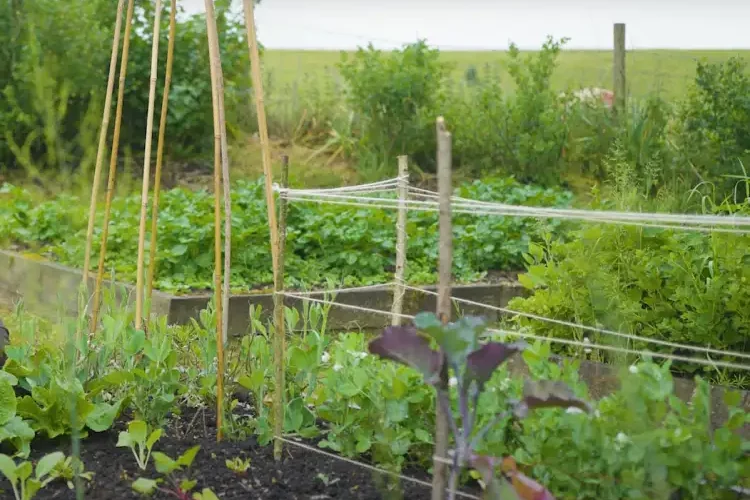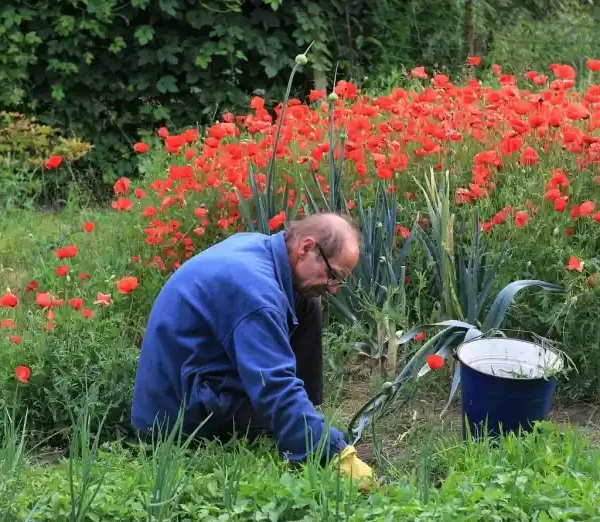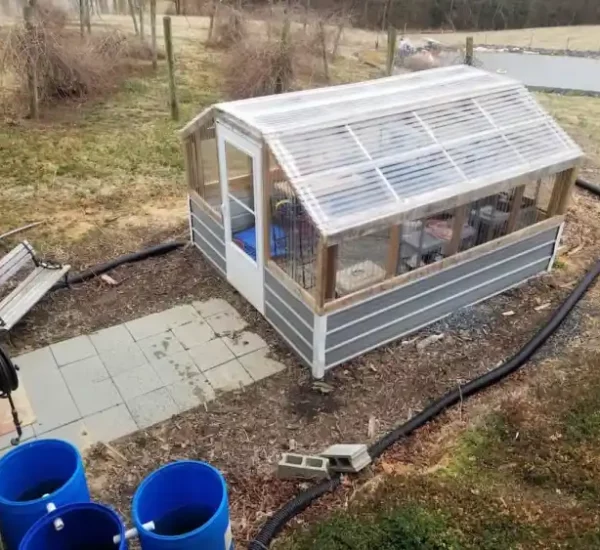Introduction to Polyculture Gardening
Polyculture gardening, also known as mixed cropping or intercropping, contrasts with monoculture farming, where a single crop is cultivated over large expanses of land. In polyculture gardens, various plant species are strategically interplanted to create mutually beneficial relationships and optimize resource use.
According to the United States Department of Agriculture (USDA), polyculture gardening promotes ecological resilience, reduces the risk of crop failure due to pests or diseases, and enhances soil fertility through diverse root systems and nutrient cycling. Additionally, it can improve yields and provide a more balanced and nutritious harvest.

Benefits of Polyculture Gardening
Biodiversity Enhancement
Polyculture gardens support a wide range of plant species, attracting diverse pollinators and beneficial insects, which contribute to ecosystem health.
Natural Pest Management
By planting different crops together, polyculture gardens disrupt pest lifecycles and reduce the need for chemical pesticides.
Soil Health
Diverse root structures and nutrient uptake patterns improve soil structure, prevent erosion, and enhance fertility.
Yield Stability
Unlike monoculture farming, where a single pest or disease can devastate entire crops, polyculture gardens offer resilience and stability in yields.
Resource Efficiency
Mixed cropping optimizes sunlight, water, and nutrients, maximizing productivity per unit area.
Design Principles of Polyculture Gardens
Companion Planting
Select plant combinations that complement each other’s growth habits, nutrient requirements, and pest resistance. For instance, planting nitrogen-fixing legumes alongside heavy-feeding crops like corn can enhance soil fertility.
Succession Planting
Plan for continuous harvests by staggering planting times and selecting crops with varying maturation rates. This ensures a steady supply of fresh produce throughout the growing season.
Crop Rotation
Rotate crops annually to prevent soil depletion and minimize disease buildup. Rotate plant families to avoid pest and disease carryover.
Vertical Integration
Make use of vertical space by incorporating trellises, arbors, and vertical planters to grow vining crops like tomatoes, cucumbers, and beans, maximizing yield in limited space.
Practical Tips for Implementing Polyculture Gardens
Start Small
Begin with a manageable plot size and gradually expand as you gain experience and confidence.
Select Suitable Plant Varieties
Choose plant species that thrive in your local climate, soil type, and growing conditions. Consult local agricultural extension offices or horticultural societies for recommendations.
Maintain Good Garden Hygiene
Practice proper weed management, mulching, and irrigation to minimize competition and create optimal growing conditions for your crops.
Monitor and Adapt
Regularly observe your polyculture garden for signs of pests, diseases, or nutrient deficiencies. Adjust planting schemes and management practices accordingly to address any issues.
Educate Yourself
Stay informed about polyculture gardening techniques and best practices by attending workshops, reading books, and engaging with online forums and communities
Conclusion
Polyculture gardening offers a sustainable and resilient approach to food production, harnessing the power of biodiversity to create productive and ecologically harmonious garden ecosystems. By following design principles, implementing practical tips, and continuously learning and adapting, gardeners can reap the myriad benefits of polyculture gardening while contributing to environmental stewardship and food security.
What exactly is a polyculture garden?
A polyculture garden is a sustainable agricultural system where multiple plant species are grown together in the same space, mimicking natural ecosystems. It contrasts with monoculture farming, which involves cultivating a single crop over large areas.
What are the benefits of polyculture gardening?
Polyculture gardens promote biodiversity, enhance natural pest management, improve soil health, stabilize yields, and optimize resource use. They also offer ecological resilience and contribute to food security.
How does polyculture gardening differ from monoculture farming?
In monoculture farming, a single crop is cultivated extensively, often leading to issues like soil depletion, pest outbreaks, and reduced biodiversity. Polyculture gardening, on the other hand, integrates diverse plant species to create a more balanced and sustainable ecosystem.
What types of plants can be grown in a polyculture garden?
Polyculture gardens can include a wide range of vegetables, herbs, fruits, flowers, and even trees. The key is to select plant species that complement each other in terms of growth habits, nutrient requirements, and pest resistance.
How do you design a polyculture garden?
Design principles for polyculture gardens include companion planting, succession planting, crop rotation, and vertical integration. These strategies optimize space, sunlight, water, and nutrients, maximizing productivity and ecological benefits.
Is polyculture gardening suitable for small-scale urban gardens?
Yes, polyculture gardening can be adapted to various scales, including small urban spaces like backyard gardens, rooftop gardens, and community plots. Container gardening, vertical gardening, and intensive planting techniques can be used to maximize productivity in limited space.
Do polyculture gardens require more maintenance than monoculture farms?
While polyculture gardens may require more planning and initial setup, they often require less maintenance over time due to natural pest management, improved soil health, and reduced dependency on synthetic inputs like pesticides and fertilizers.
Can polyculture gardening help mitigate climate change?
Yes, polyculture gardening promotes soil carbon sequestration, reduces greenhouse gas emissions associated with synthetic inputs, and enhances ecosystem resilience, making it a valuable tool for climate change mitigation and adaptation.
Are there any challenges associated with polyculture gardening?
Challenges may include selecting compatible plant combinations, managing competitive interactions between species, and balancing the needs of different crops. However, with proper planning and management, these challenges can be overcome.
Where can I learn more about polyculture gardening techniques and best practices?
Reputable sources for information on polyculture gardening include government agricultural agencies, horticultural societies, academic institutions, online forums, and books authored by experts in sustainable agriculture and agroecology.
- Lip Filler London – Lip Augmentation & Natural Lip Enhancement - December 16, 2025
- Tennessee’s THC Beverage Market - June 5, 2025
- Top THC Infused Seltzers in Delaware - June 5, 2025




